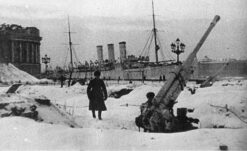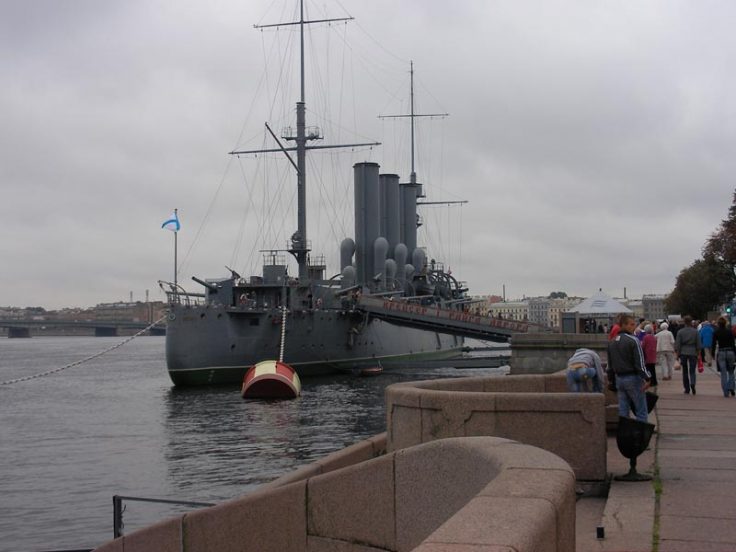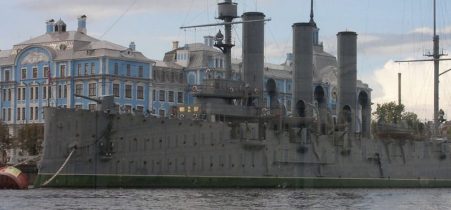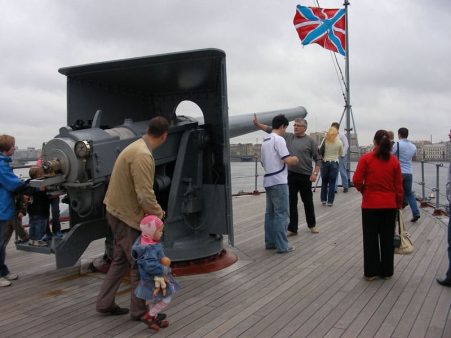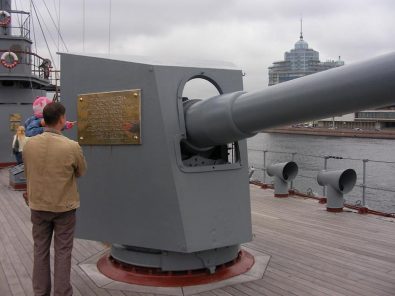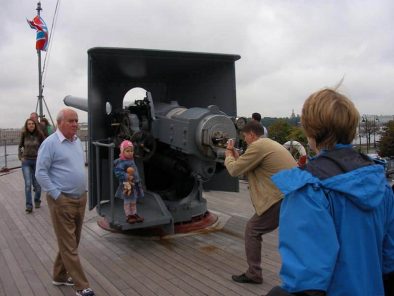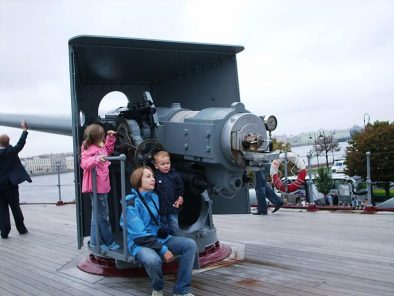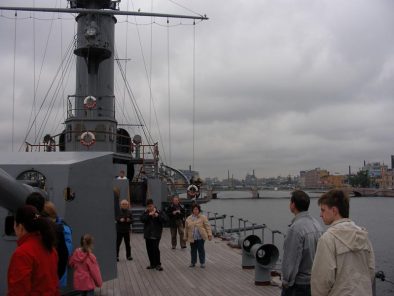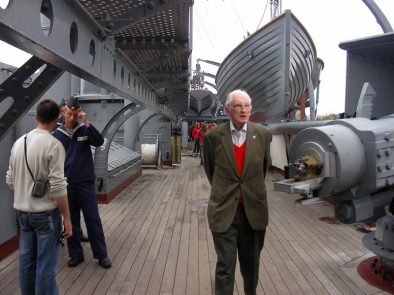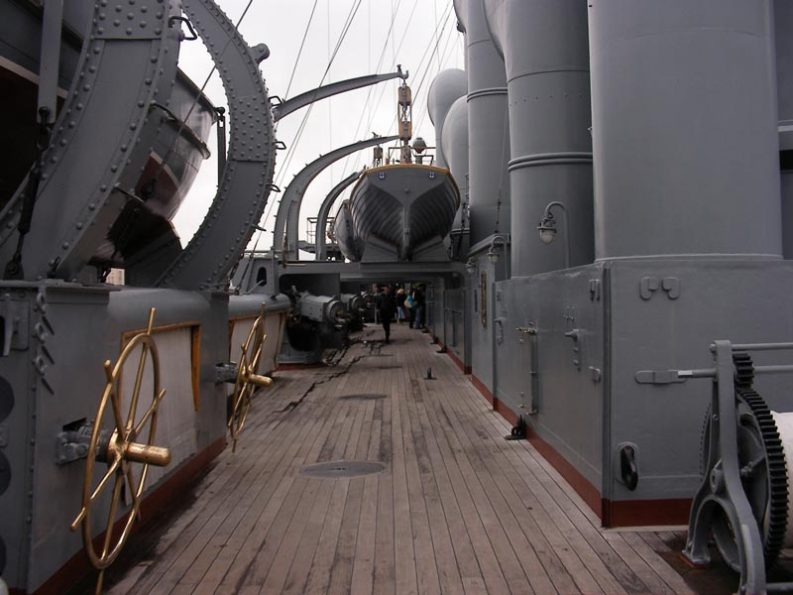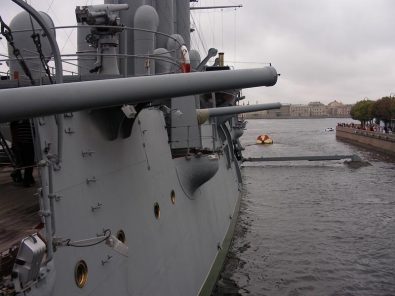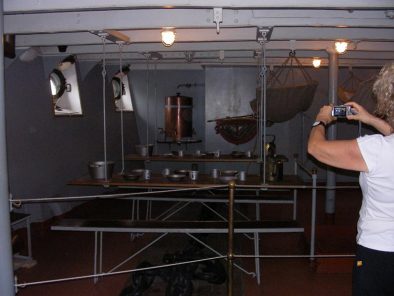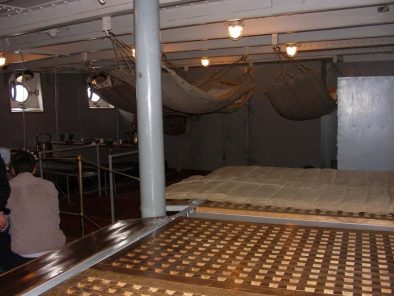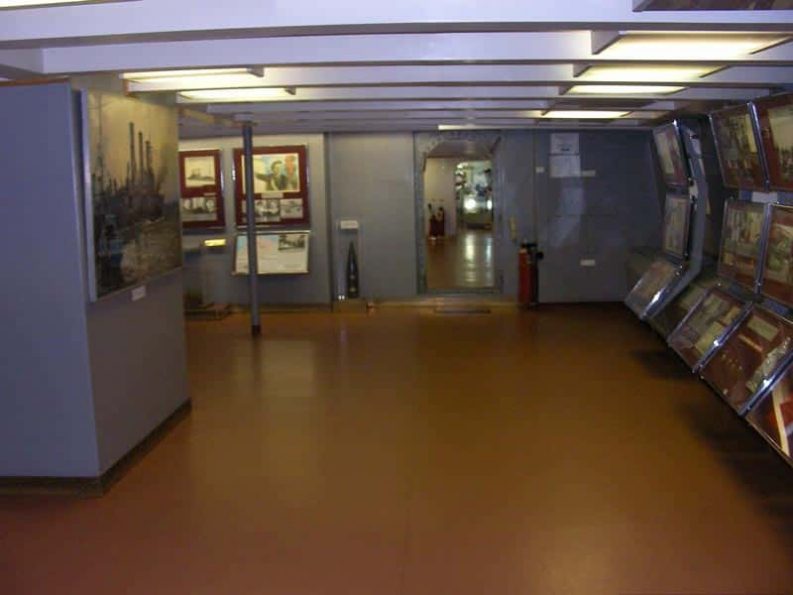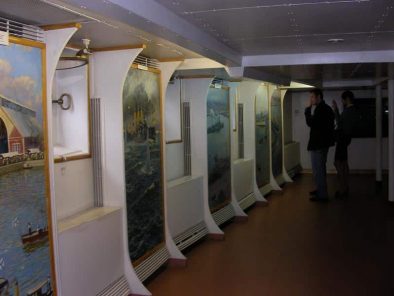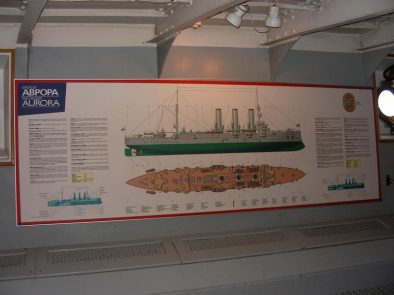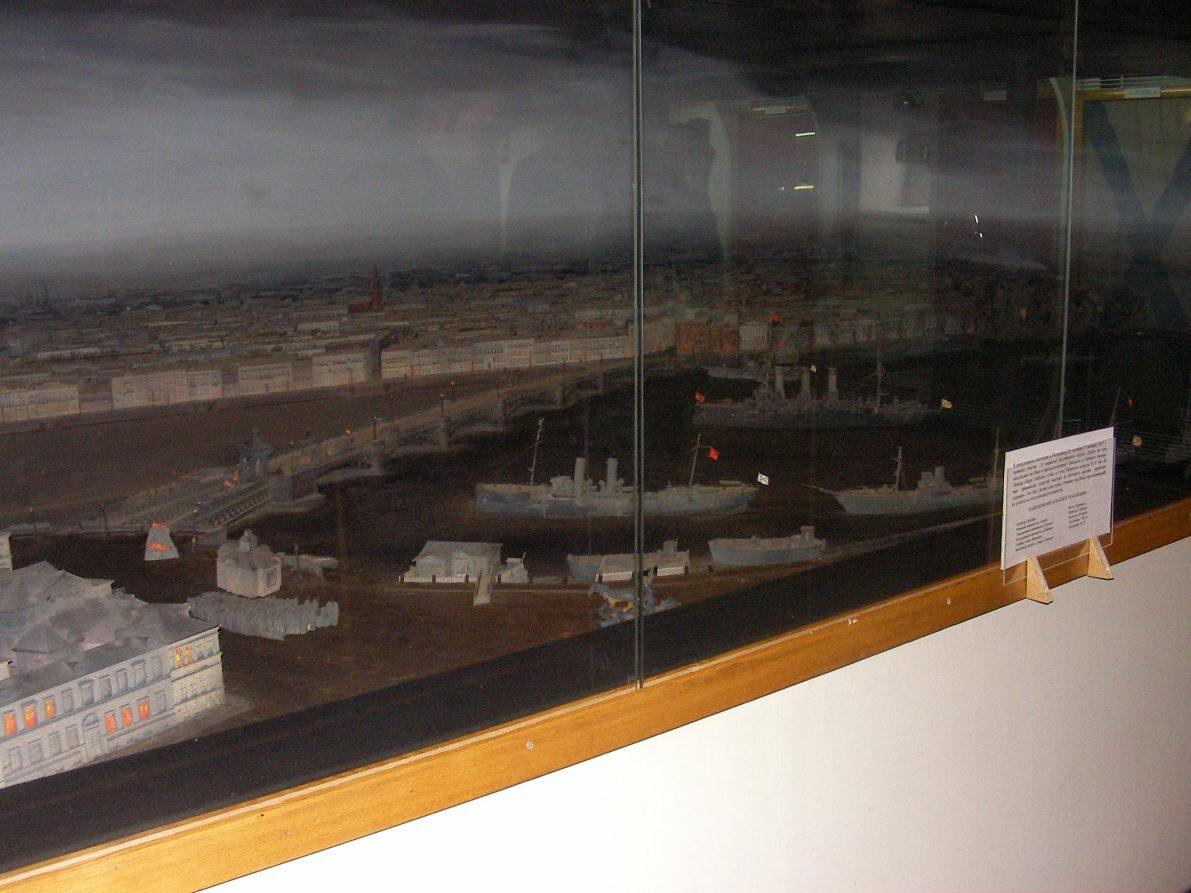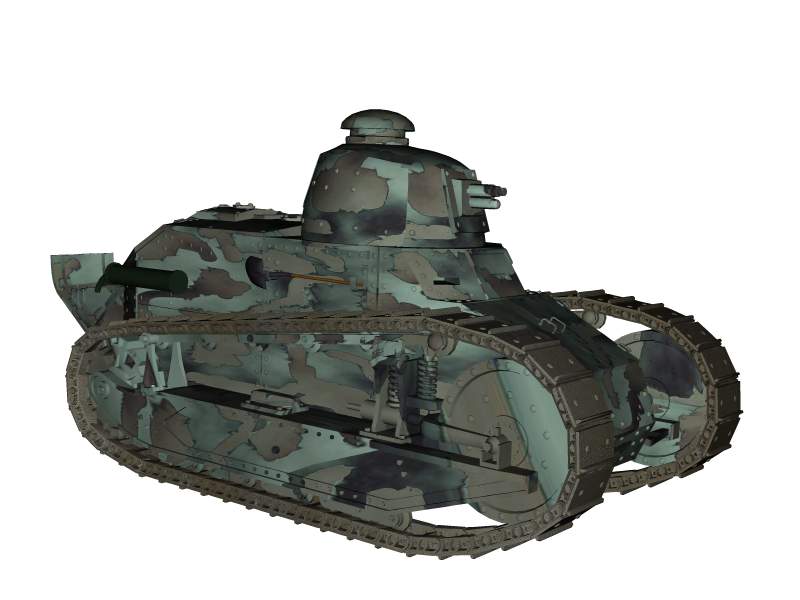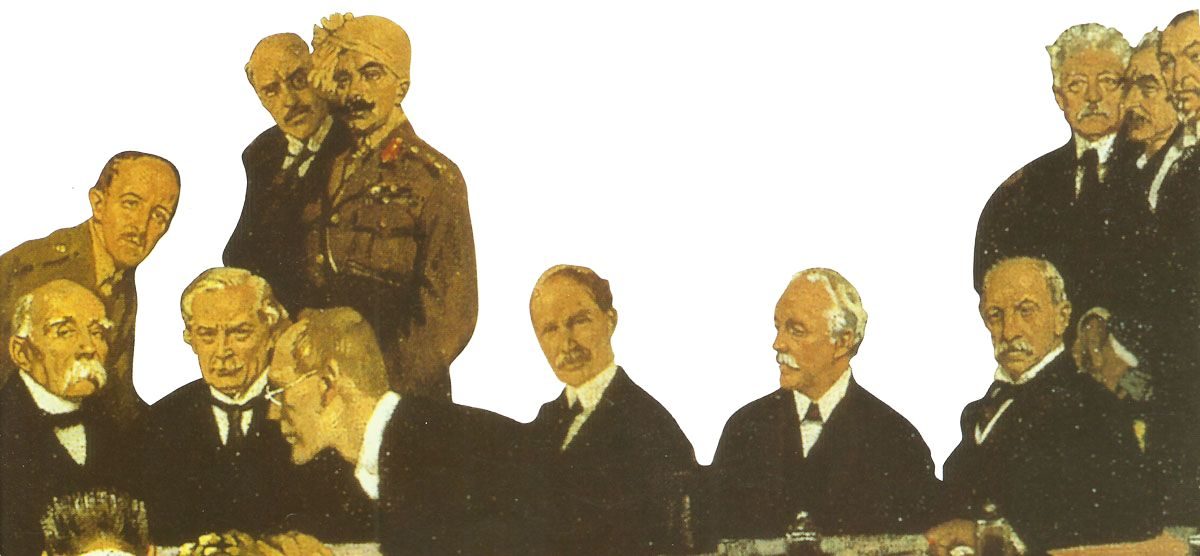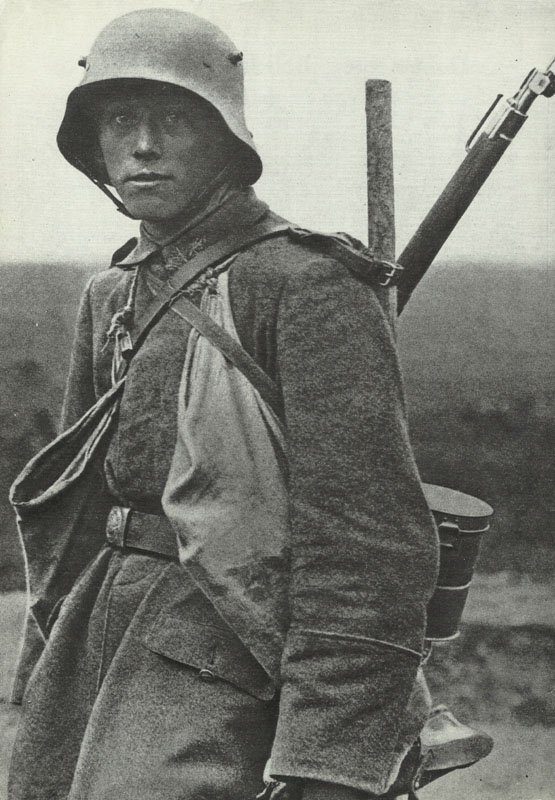Russian Pallada class protected cruisers (Pallada, Diana, Aurora).
History, development, service, specifications, pictures and model.
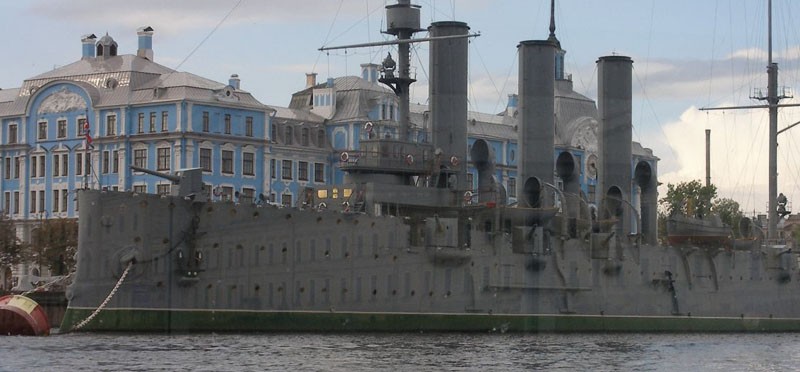
Russian Armored Cruiser Aurora
Table of Contents
Pallada class (Pallada, Diana, Aurora)
Type: Protected cruisers (Armored cruiser).
The Russian armored cruiser Aurora is a significant ship in Russian and Soviet history.
Überblick
Construction and Specifications:
– Built in St. Petersburg, Russia
– Launched in 1900
– Entered service in 1903
– Displacement: approximately 6,731 tons
– Length: 126.8 meters (416 feet)
– Armament included 152mm (6-inch) guns and smaller weapons
Early Service:
– Participated in the Russo-Japanese War (1904-1905)
– Survived the Battle of Tsushima in 1905, one of the few Russian ships to do so
Role in the Russian Revolution:
– Most famously known for its role in the October Revolution of 1917
– On November 7, 1917 (October 25 in the old Russian calendar), Aurora fired a blank shot from its forecastle gun
– This shot was the signal to storm the Winter Palace, marking the beginning of the Bolshevik revolution
Soviet Era:
– Became a symbol of the October Revolution
– Used as a training ship for the Soviet Navy
Present Day:
– Now preserved as a museum ship in St. Petersburg
– Moored on the Neva River
– Open to visitors and serves as a popular tourist attraction
Cultural Significance:
– Featured in many Soviet films and literature
– Considered an iconic symbol of Russian naval history and the Soviet era
The Aurora remains an important historical artifact, representing both Russian naval tradition and the country’s revolutionary past.
History
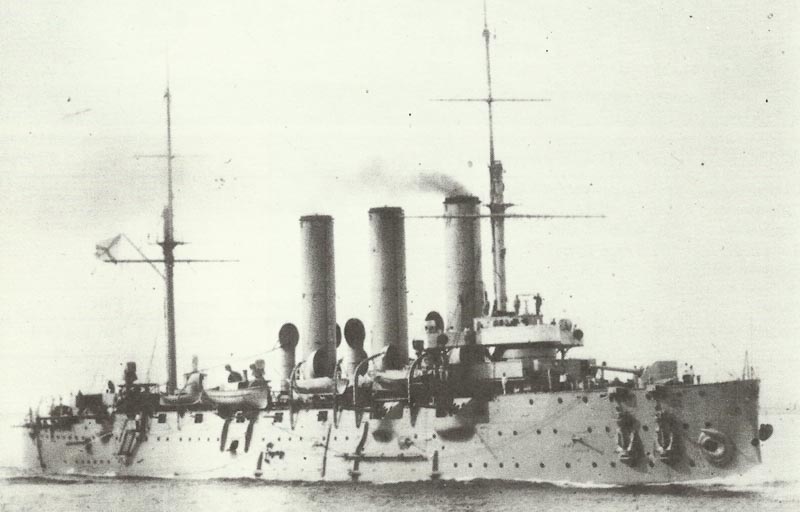
The Pallada class were three-funneled cruisers having a forecastle deck so far as the mainmast. The protective deck was 2-inch (5.08 cm) with 3 inch (7.62 cm) slopes, the command tower 6 inch (15.24 cm), the funnel uptakes 2.5 inch (6.35 cm) for just one deck as well as the hoists to the 6-inch guns 1.5 inch (ca. 4 cm).
The 3 ships were sheathed and coppered. There were a single 6-inch gun forward on the forecastle deck, 4 6-inch guns in sponsons at upper deck level close to the bridge and fore funnel, and 3 guns aft. The 11-pounders had been on the main and upper decks. Two more 6-inch guns had been afterward incorporated by the mainmast, and during World War One Aurora’s armament had been improved to 14 x 6-inch guns, while Diana had the 6-inch guns replaced by 10 x 5.1-inch guns. 1 and 2 x 11-pounder anti-aircraft guns had been furthermore incorporated correspondingly.
The Pallada was torpedoed however, not seriously damaged in the Japanese attack on 8/9.2.1904, and it was sunk by 11-inch howitzers in the siege of Port Arthur on December 8, 1904. She was elevated by the Japanese and served in their navy as the Tsugaru.
Cruiser Aurora and the Russian Revolution
The Provisional Government of 1917, established in the Winter Palace at the heart of Petrograd, had been completely separated from Russia. The building had been guarded by units of officer cadets, Cossack’s, and women’s battalions. While the ring of insurgent troops came closer around the Winter Palace, and as the messages from the war fronts became more and more despairing, therefore the talks of the more conciliatory statesmen grew to become much more anxious as well as their steps turned out to be even more lacking of any sense. By constantly moving outside the congress and after that returning to it the Mensheviks as well as the right-wing Socialist Revolutionaries attempted to disorganize its function. The effect of their attempts had been really crippling for them.
Along with a little rowdy demos and a lot of hysterical ranting as well as appeals, the right-wing Socialist Revolutionaries and Mensheviks succeeded in getting together out from the congress a minor crowd – about 50 of the delegates.
Simultaneously, there occurred an important regrouping of forces at the congress. The quantity of Socialist Revolutionaries was cut down by 7, however the number of left-wing Socialist Revolutionaries raised to 81. The Mensheviks gone away entirely, but the number of Mensheviks-internationalists increased to 21. Which means numerous people in the faction of Mensheviks and Socialist Revolutionaries didn’t follow the orders of their leaders to go out of the congress, but preferred to change to the left-wing groups.
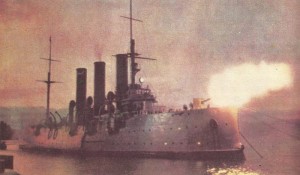
Around 10 o’clock in the evening of November 7, 1917 (Russian calendar October 25, 1917) the revolutionary soldiers surrounding the Winter Palace went over to the assault for which the signal was a shot fired by the cruiser Aurora. The Winter Palace had been captured. Antonov-Ovseyenko charged the people of the Provisional Government and put them in charge of the Red Guards to be transported to the Peter and Paul Citadel.
Aurora is still conserved as a museum ship of the Russian Revolution:
Specifications Pallada class protected cruisers
Specification:
Cruiser Aurora | Specification (in World War One) |
|---|---|
Displacement | 6,830 tons (Pallada 6,823; Diana 6,657) |
Dimensions length | 415 ft 8 in (126.69 m) |
Dimensions beam | 55 ft (16.76 m) |
Dimensions draught | 21 ft 6.in maximum (6.55 m) |
Propulsion | 24 Belleville boilers; 3-shaft VTE; 12,000-13,000 hp |
Coal | normal 960 tons; maximum 970 tons |
Speed | 19-20 kts |
Main armament | 10 x 6-inch guns |
Secondary armament | she was also fitted for minelaying (125 mines at Diana) |
Anti-aircraft | 5 x 6-pdr AA guns; 2 machine-guns |
Torpedo tubes | 2 x 18-inch submerged on broadside |
Armor protective deck | 2 inch (3 inch slopes) |
Armor command tower | 6 inch |
Armor funnel on one deck | 2.5 inch |
Armor 6-inch guns | 1.5 inch |
Complement | 573 |
Laid down | June 1897 (Pallada Dec 1895; Diana Dec 1895) |
Launched | May 1900 (Pallada Aug 1899, Diana Oct 1899) |
Completed | 1903 (Pallada and Diana 1902) |
Fate | Preserved (Pallada scrapped 1923; Diana scrapped 1922) |
References and literature
Conway’s all the World Fighting Ships 1860-1905
Jane’s Fighting Ships of Word War I
History of World War I (AJP Taylos, S.L. Mayer)






